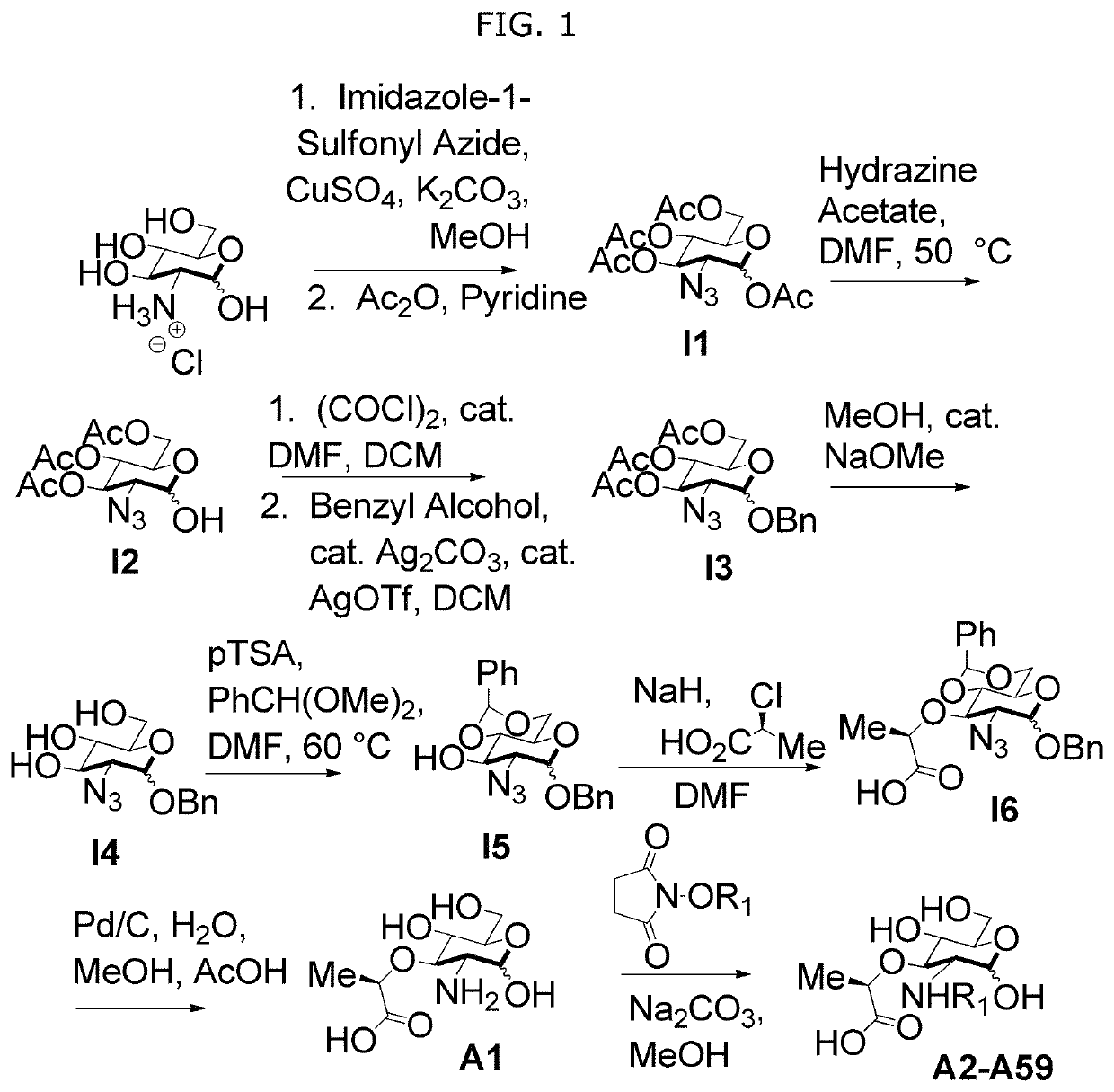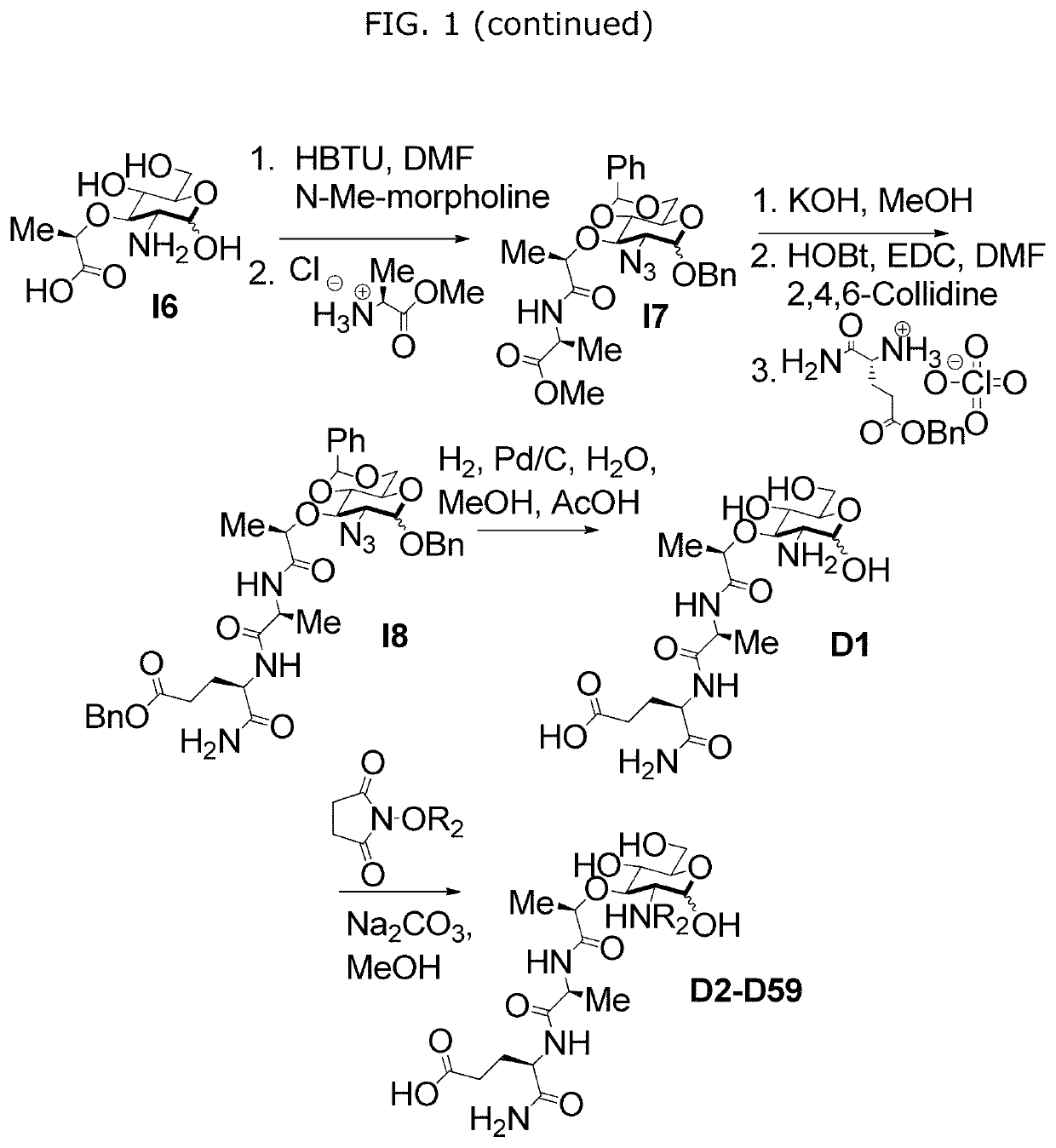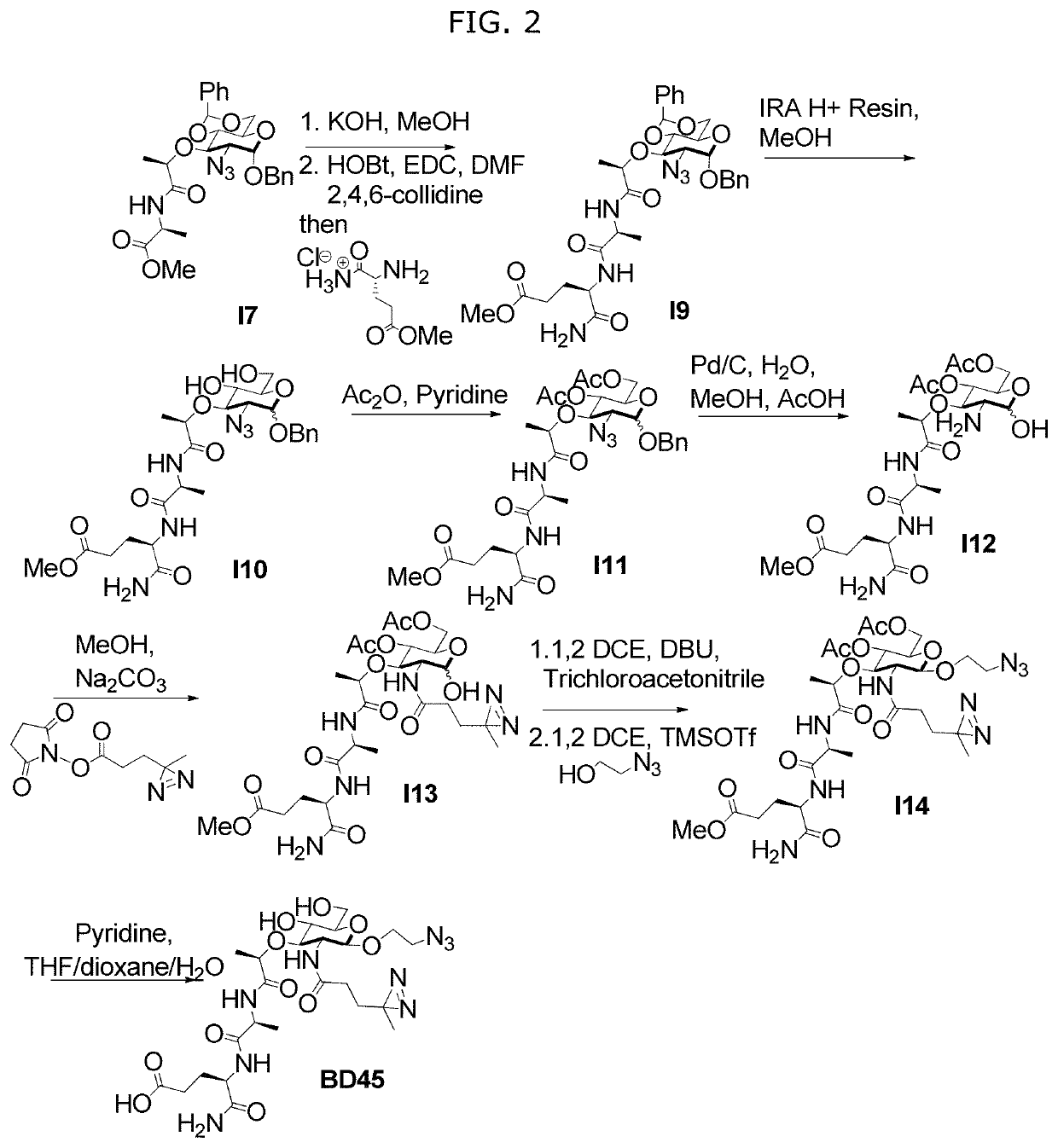Synthetic N-acetyl-muramic acid derivatives and uses thereof
a technology of n-acetyl-muramic acid and derivatives, which is applied in the direction of esterified saccharide compounds, peptide/protein ingredients, antibiotic resistance, etc., can solve the problems of complex understanding of the misrecognition of the innate immune system, uncontrollable inflammation, and antibiotic resistance, so as to improve the innate immune response, stabilize the nod2, and modify the cell wall
- Summary
- Abstract
- Description
- Claims
- Application Information
AI Technical Summary
Benefits of technology
Problems solved by technology
Method used
Image
Examples
example 1
ycan Modifications Tune the Stability and Function of the Innate Immune Receptor Nod2
[0114]We investigated how acetylation / deacetylation of these peptidoglycan fragments modulates molecular recognition by Nod2.
[0115]In order to further study the interaction of N-substituted MDPs, for example, naturally occurring muramyl dipeptides (MDP), N-acetyl-MDP (compound D2), N-glycolyl-MDP (compound D9) and 2-amino-MDP (compound D1), and Nod2, we required a synthetic route for MDP that offers selective functionalization of the 2-position. Existing synthetic strategies require extensive carbohydrate manipulation, troublesome dipeptide couplings, or expensive carbohydrate starting materials and to date, no existing syntheses allow for a facile, late-stage modification at the 2-position. Additionally, no syntheses exist for the deacetylated peptidoglycan derivatives. We therefore examined a rapid and modular synthesis that would allow for alterations at the 2-position and provide a divergent rou...
example 2
neering of Peptidoglycan to Study Bacterial Cell Wall Structure and Function
[0124]The fundamental building blocks of bacterial cell wall are the glycans NAG and NAM. NAM is exclusively used as a peptidoglycan building block. This monosaccharide is introduced during the first committed step to bacterial cell wall biosynthesis with the formation of UDP-N-acetyl-muramic acid (UDP-MurNAc) (FIG. 6a). It was at this intermediate that our bioorthogonal handle was installed. To circumvent the synthesis of the gram quantities of the UDP-sugar derivatives and complicated delivery strategies for the diphosphate moiety, we utilized cell wall recycling machinery. The recycling enzyme anomeric NAM / NAG kinase (AmgK) converts NAM into MurNAc 1-phosphate that is then converted to UDP-MurNAc by MurNAc α-1-phosphate uridylyl transferase (MurU) (FIG. 6a). Intrigued by the functionality of these two enzymes, a modular synthetic strategy was implemented to build a library of NAM derivatives (FIG. 6b). Th...
example 3
n of NAM Derivatives Via a Chemoenzymatic Route
[0132]Enzymatic reaction conditions. Activity and promiscuity of purified enzymes were studied in the enzymatic reactions. Products were analyzed by HRLC / MS (Table 5). Conditions for each enzymatic reaction are as follows:
[0133]Generation of Compounds B1-B59: To 100 mM Tris buffer, pH 7.9, 2.0 mM of a single A1-A52 NAM substrate, 4.0 mM ATP, and 1.0 mM MgCl2 was added 1.0 μg purified AmgK enzyme per 100 μL reaction sample. The reaction was incubated at room temperature for 2 h.
[0134]Generation of Compounds C1-059 To 100 mM Tris buffer, pH 7.9, 2.0 mM of a single B1-B52 MurNAc-1P substrate, 4.0 mM UTP (Sigma-Aldrich), and 0.5 U of baker's yeast inorganic pyrophosphatase (Sigma-Aldrich) was added 1.0 μg purified MurU enzyme per 100 μL reaction sample. The reaction was incubated at 37° C. for 3 h.
[0135]Generation of Compounds AH1-AH59: To 100 mM Tris buffer, pH 7.9, 2.0 mM of one C1-052 UDP MurNAc derivative, 15 mM (NH4)2SO4, 15 mM MgCl2, ...
PUM
| Property | Measurement | Unit |
|---|---|---|
| temperature | aaaaa | aaaaa |
| pH | aaaaa | aaaaa |
| flow rate | aaaaa | aaaaa |
Abstract
Description
Claims
Application Information
 Login to View More
Login to View More - R&D
- Intellectual Property
- Life Sciences
- Materials
- Tech Scout
- Unparalleled Data Quality
- Higher Quality Content
- 60% Fewer Hallucinations
Browse by: Latest US Patents, China's latest patents, Technical Efficacy Thesaurus, Application Domain, Technology Topic, Popular Technical Reports.
© 2025 PatSnap. All rights reserved.Legal|Privacy policy|Modern Slavery Act Transparency Statement|Sitemap|About US| Contact US: help@patsnap.com



